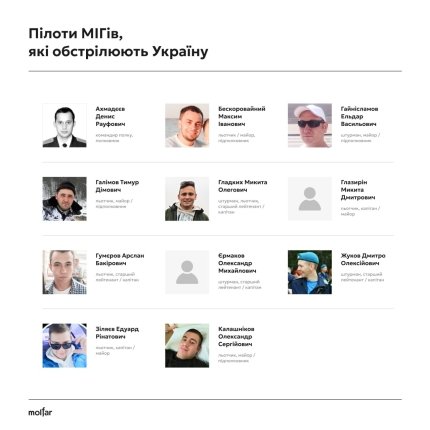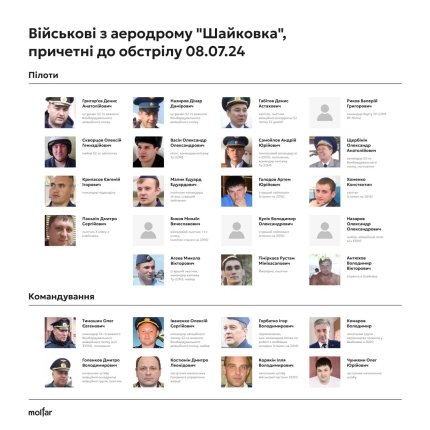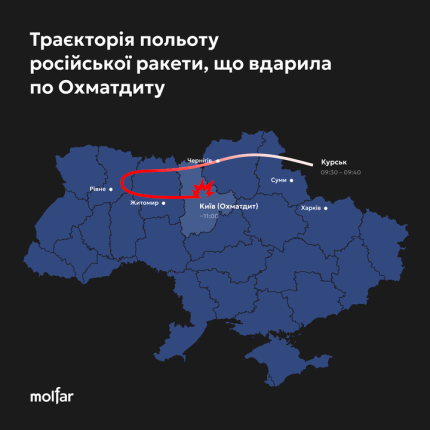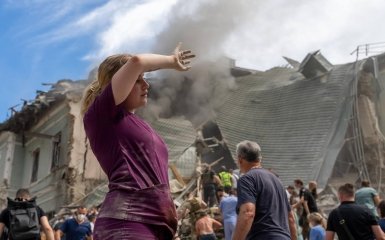On July 8, the Russian military launched a missile attack on Ukraine, in particular, the "Okhmatdyt" children's hospital in Kyiv came under enemy fire. OSINT-analysts of Molfar have identified the occupiers of the Russian Federation, who are involved in the massive attack.
Points of attention
- 95 Russians were involved in the missile attack on the Okhmatdyt hospital, including pilots and engineers.
- The analysis showed that the Kh-101 missile that damaged the oncology ward had no previous damage.
- The Okhmatdyt Hospital, which treats more than 20,000 children, was destroyed by the Russian military
- 10 surgical departments were affected, five oncology and others, and 16 people were hospitalised.
- The 44th Missile Brigade and the 22nd Heavy Bombardment Aviation Division of the Russian Aerospace Forces were involved in the attack.
Who is involved in the July 8 missile strike on "Okhmatdyt" hospital?
According to Molfar OSINT analysts, 95 Russians are involved in missile terror.
Among them are MiG pilots of the 22nd heavy bomber aviation division of the long-range aviation command of the Russian Air Force and Space Forces (military unit 06987, Engels airbase). As well as engineers and pilots who gave orders and launched missiles.

Russians from the 52nd Guards Heavy Bomber Aviation Regiment of the Aviation Division of the Long-Range Aviation Command of the Air Force Space Forces of the Russian Armed Forces (military unit 33310, Shaykovka airbase) and the 44th Air and Space Missile Brigade were liekly involved in the missile strike on "Okhmatdyt" hospital.

Thus, the following military units are responsible for the attacks:
44th Missile Brigade of the Russian Aerospace Forces (military unit 83122);
22nd heavy bomber aviation division of the long-range aviation command of the Russian Aerospace Forces;
22nd Heavy Bomber Aviation Division of the Long-range Aviation Command of the Russian Aerospace Forces (military unit 06987, based at Engels Airfield);
52nd Guards Heavy Bomber Aviation Regiment, Aviation Division of the Long-Range Aviation Command of the Russian Aerospace Forces (military unit 33310, based at Shaikovka Airfield).
In addition, the analysts published a list of the command engineers who gave orders and launched missiles at hospitals, residential buildings and children. Molfar also gathered information about the families of the involved occupiers. You can see the complete list at the link.

The new building of the oncology department of "Okhmatdyt" was damaged by the Kh-101 missile, which before the impact had a typical downward trajectory and had no visible damage, and this nullifies the thesis of Russian propaganda about its previous damage by anti-aircraft weapons, analysts emphasised.
Russian missile attack on Okhmatdyt": What is currently known
"Okhmatdyt" is the largest children's hospital in Ukraine, where more than 20,000 children from all over the country are treated every year.
On July 8, the aggressor country of the Russian Federation hit it with a missile and destroyed the toxicology building. Four more buildings of the medical facility were damaged.
10 surgical departments, five oncology departments, two somatic departments, intensive care, two intensive care units, operating units, radiology and radiation therapy departments, and part of the haematology oncology laboratory were affected.
Currently, the children have been evacuated to other hospitals in the capital.
Two adults have been confirmed dead in the "Okhmatdyt" hospital. One of them is a young doctor at a medical institution. So far, 16 victims are known. Eight of them are children. 15 victims were hospitalised.



